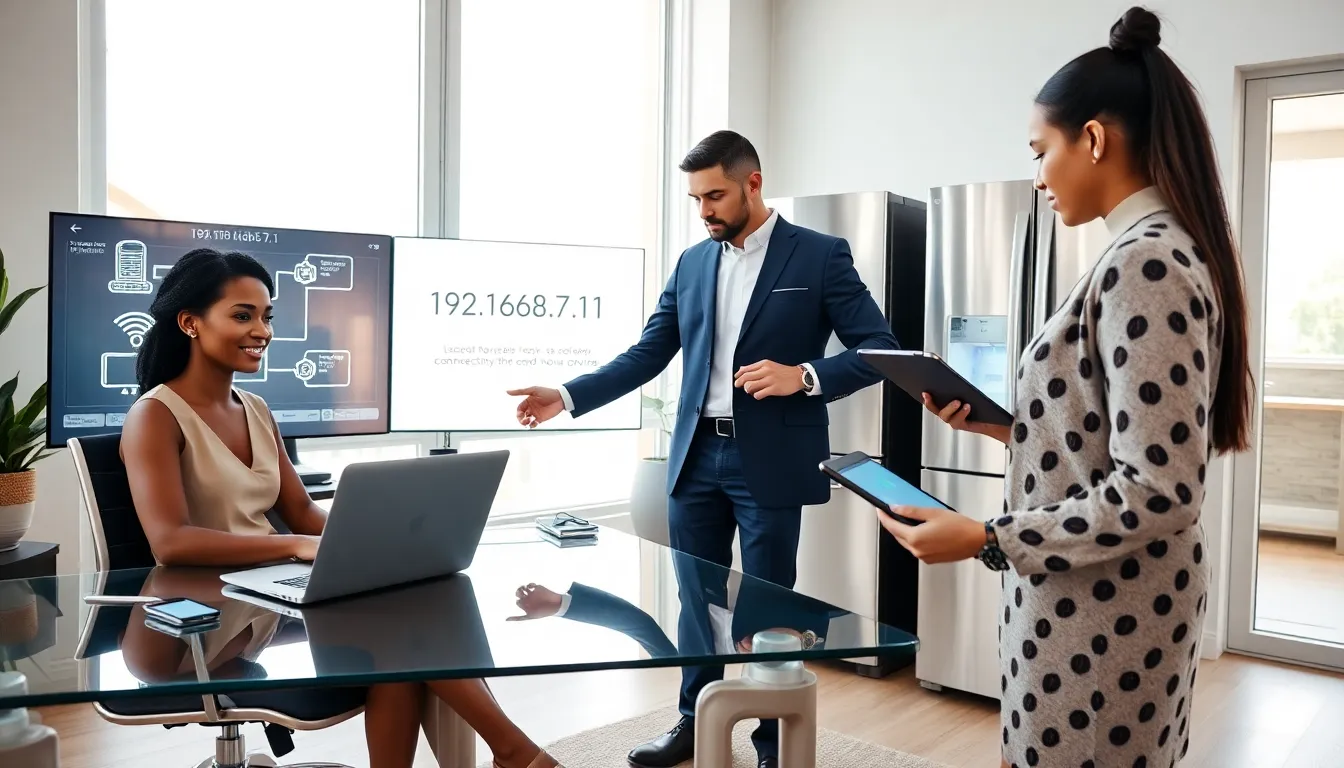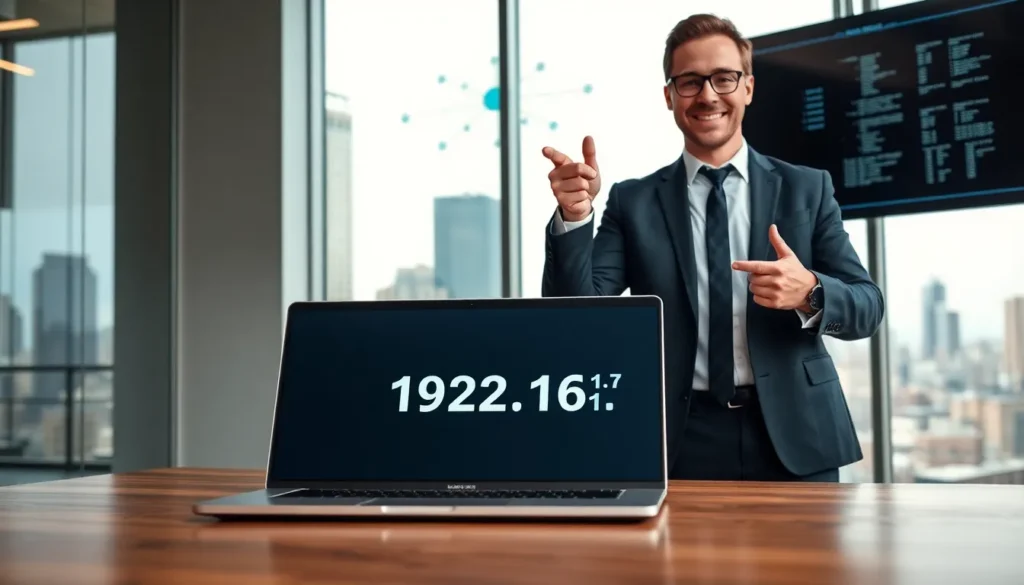Picture this: you’re ready to connect all your devices for a seamless online experience when suddenly you find yourself faced with a series of numbers that look like a bad scientific equation. Enter 1921687.1, the enigmatic IP address that pops up in discussions about networks, routers, and internet accessibility. Understanding what this number represents is essential for anyone trying to navigate the digital landscape today. So, buckle up as we jump into the nitty-gritty details and uncover why 1921687.1 might just be the superhero your network didn’t know it needed.
1921687.1

IP Address Basics
An IP address, or Internet Protocol address, is akin to a home address for your devices on the internet. Every single device needs a unique identifier to communicate with one another, and that’s where IP addresses come in. Specifically, 1921687.1 belongs to the 192.168.x.x range, commonly used in private networks. This means it’s not the address you’d use to find someone surfing the web on the open internet but rather the address that corresponds to specific devices within a localized network.
Common Usage Scenarios
So, where exactly would you encounter this particular IP address? Imagine this: you have a home network with several devices, laptops, smartphones, and maybe a smart refrigerator. All those devices communicate with your router, and they do so using IP addresses like 1921687.1. This address often serves as a gateway address, making it essential for managing local networks and ensuring everything runs smoothly. It’s like the friendly neighborhood bouncer ensuring that only the right devices get into the network party.
How Does 1921687.1 Compare to Other IP Addresses?
Public vs. Private IP Addresses
When discussing IP addresses, it’s crucial to differentiate between public and private addresses. Public IP addresses are the ones visible on the global internet, while private IP addresses like 1921687.1 are meant for internal network use. This distinction is significant: by using private addresses, networks can conserve valuable public address space and enhance security. It’s like having a secure VIP room at a club that’s only accessible to your friends.
IPv4 vs. IPv6
Another interesting comparison arises when looking at IPv4 and IPv6. The 192.168.x.x range falls under IPv4, which, while still widely used, is running low on available addresses due to our ever-expanding online world. Enter IPv6, the newer standard designed to accommodate a virtually limitless number of devices. In this context, 1921687.1 represents a bridge from the past to the future, reminding us how far we’ve come in networking technology.
Configuring 1921687.1 for Network Access
Accessing the Configuration Page
To tap into the full potential of 1921687.1, one needs to access the configuration page of a router or device. Typically, this involves typing the address into a web browser’s address bar. Once input, users are usually prompted to provide login credentials, that trusty username and password combo that can be a challenge to remember. Some routers may even have a default username such as “admin” for access.
Changing Settings and Security Protocols
Once you’re in, a whole new world of customization opens up. Users can change settings related to network names, configure security protocols, and even manage bandwidth allocations. A vital step in this process is securing the network against unauthorized access. If 1921687.1 represents your networking control center, then locking the front door with strong passwords and updated security settings is simply good practice.
Troubleshooting Common Issues
Connectivity Problems and Solutions
Even the best networks can encounter hiccups. If devices struggle to connect using 1921687.1, it may indicate a larger problem lurking beneath the surface. Common issues include incorrect configurations or outdated firmware. Regularly checking and updating settings can often resolve these dilemmas, returning the network to its optimal functioning state.
Resetting the Router or Device
If all else fails, reset may be the magic button that saves the day. This process rests the router to its factory settings, wiping existing configurations and allowing users to start fresh. It’s like cleaning out an overflowing closet, making space for new and better connections. Users typically perform this reset by pressing a small hidden button on the router or following specific commands in the configuration interface.
Future of IP Addresses and Networking
Trends in Networking Technology
The world of IP addresses is evolving rapidly. As more devices come online every day, from refrigerators to quantum computers, technologies such as IoT (Internet of Things) are pushing the boundaries of networking. These developments make understanding concepts like 1921687.1 even more essential, as they highlight the growing complexity and interconnectivity of our digital lives.
The Role of IPv6 in Modern Networking
Looking ahead, IPv6 will take center stage, allowing us to expand our networks without the limitations imposed by IPv4. This transition is not only important for technical reasons: it vastly impacts how we think about connectivity. As users migrate from IPv4 to IPv6, numbers like 1921687.1 may become more of a nostalgic relic, though they will never be completely forgotten.

